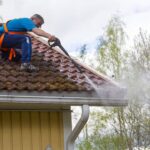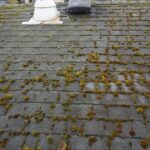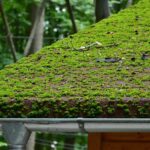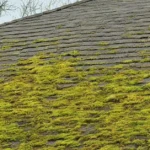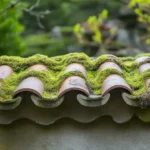When it comes to maintaining the integrity and longevity of your home, having effective roof drainage solutions for metal roofs is crucial. Metal roofs are known for their durability and aesthetic appeal, but without proper drainage, they can lead to significant issues such as water pooling and leakage. In this article, we will explore various drainage solutions that are essential for homeowners with metal roofs.

Understanding the Importance of Roof Drainage
It is essential to understand why roof drainage is so important. Proper drainage prevents water from accumulating on your roof, which can cause damage over time. Water pooling can lead to rust, leaks, and even structural damage.
The Role of Gutters and Downspouts
Gutters and downspouts play a critical role in directing water away from your roof and home foundation. They are essential components of any roof drainage system, especially for metal roofs. Ensuring that your gutters and downspouts are free of debris is vital for efficient water flow.
For more detailed guidance on keeping your gutters and downspouts clear, check out our [DIY tips](https://roof-home.com/diy-tips-for-downspout-repair/) for downspout repair. This article provides useful advice on maintaining these essential drainage components.
Types of Roof Drainage Systems
There are several types of drainage systems suitable for metal roofs:
- Gutter Systems – These systems collect rainwater and direct it away from the roof.
- Scuppers – Openings placed at the roofs edge to allow water to drain out and away from the building.
- Internal Drains – Like the drainage systems seen in commercial buildings, internal drains are installed at the roof surface and channel water through pipes inside the building structure.
For more information on these systems, you can explore our article on [commercial building roof drainage](https://roof-home.com/roof-drainage-solutions-for-commercial-buildings/).
Choosing the Right Materials for Your Drainage System
When selecting materials for your drainage system, consider the following:
- Durability – Choose materials that will withstand harsh weather conditions.
- Cost-effectiveness – Balance initial costs with long-term maintenance and repair expenses.
- Compatibility – Ensure that materials are compatible with your metal roof to prevent corrosion and damage.
Installation and Maintenance Tips
Proper installation and regular maintenance are key to effective drainage. Ensure your drainage system is installed by professionals and schedule regular inspections to keep it functioning optimally. You can refer to our [roof inspection checklist](https://roof-home.com/roof-inspection-checklist-pdf/) for more information on what to look for during inspections.
Common Issues with Metal Roof Drainage
Some common issues homeowners face with metal roof drainage include:
- Blockages – Debris can accumulate, leading to blockages.
- Improper Pitch – If the roof or gutters are not pitched correctly, water may not drain properly.
- Corrosion – This can occur in drainage systems made of incompatible materials.
Learn how to address these issues in our guide on [unclogging roof drainage systems](https://roof-home.com/how-to-unclog-roof-drainage-systems/).
Enhance Your Roof with Reflective Coatings
In addition to drainage, consider applying reflective coatings to your metal roof. This not only helps in reducing heat absorption but also prolongs the roof’s lifespan. For more on this, read our [reflective roof coating guide](https://roof-home.com/how-to-apply-reflective-roof-coating/).
Conclusion
Ensuring effective roof drainage solutions for metal roofs is vital for protecting your home from water damage. By understanding the importance of proper drainage, choosing the right materials, and maintaining your system, you can extend the life of your metal roof and prevent costly repairs.
For further reading on related topics, you can visit Maryland Roofers.

FAQ
What is the best drainage system for metal roofs?
The best system depends on your specific roof design, but gutter systems and internal drains are commonly used for their effectiveness.
How often should I inspect my roof drainage system?
Regular inspections should be conducted annually, with additional checks after severe weather conditions.
Can I install a roof drainage system myself?
While DIY installation is possible, professional installation is recommended to ensure proper functioning and avoid potential issues.
This article contains affiliate links. We may earn a commission at no extra cost to you.




